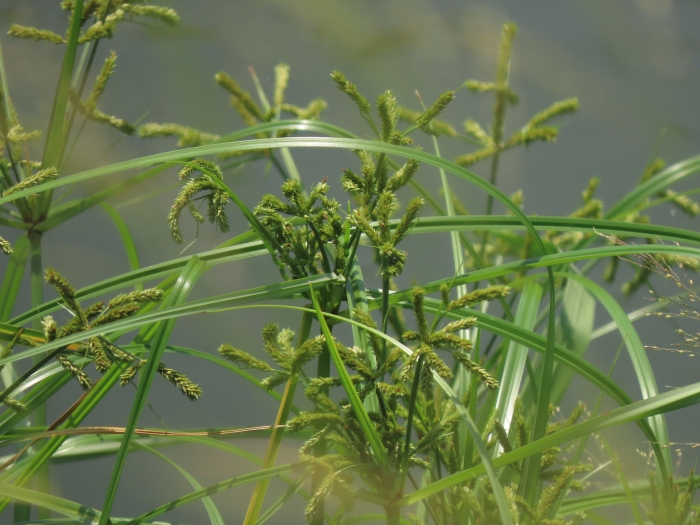Shingle Flatsedge
(Cyperus imbricatus)
Shingle Flatsedge (Cyperus imbricatus)
/
/

chiuluan
CC BY 4.0
Image By:
chiuluan
Recorded By:
Copyright:
CC BY 4.0
Copyright Notice:
Photo by: chiuluan | License Type: CC BY 4.0 | License URL: http://creativecommons.org/licenses/by/4.0/ | Rights Holder: chiuluan | Publisher: iNaturalist | Date Created: 2021-07-19T13:03:45-07:00 |












































Estimated Native Range
Summary
Cyperus imbricatus, commonly known as Shingle Flatsedge, is an evergreen perennial sedge, often found in wetlands such as bogs, marshes, and along the edges of ponds and streams in the tropics and subtropics of Asia, Africa and the Americas. It typically grows to a height of 2-4 feet (0.6-1.2 meters) and a width of 1-2 feet (0.3-0.6 meters). This sedge is characterized by its umbrella-like clusters of narrow, grass-like leaves and brownish flower spikes that appear in summer. While not particularly showy, the flowers add a textural contrast in water garden settings.
Shingle Flatsedge is valued for its ability to thrive in wet conditions and is often used in water gardens, rain gardens, and as a marginal aquatic plant. It is also useful for erosion control along waterways. In cultivation, it requires full sun to part shade and consistently moist to wet soil. It is adaptable to a range of soil types, provided they are well-saturated with water. While generally low-maintenance, it can spread aggressively by rhizomes and seeds, especially in warm, humid climates. As such, it is considered potentially invasive in regions like Florida, and gardeners should consult local regulations before planting.CC BY-SA 4.0
Shingle Flatsedge is valued for its ability to thrive in wet conditions and is often used in water gardens, rain gardens, and as a marginal aquatic plant. It is also useful for erosion control along waterways. In cultivation, it requires full sun to part shade and consistently moist to wet soil. It is adaptable to a range of soil types, provided they are well-saturated with water. While generally low-maintenance, it can spread aggressively by rhizomes and seeds, especially in warm, humid climates. As such, it is considered potentially invasive in regions like Florida, and gardeners should consult local regulations before planting.CC BY-SA 4.0
Plant Description
- Plant Type: Grass
- Height: 2-4 feet
- Width: 1-2 feet
- Growth Rate: Moderate
- Flower Color: N/A
- Flowering Season: Summer, Spring, Fall
- Leaf Retention: Evergreen
Growth Requirements
- Sun: Full Sun
- Water: High
- Drainage: Medium
Common Uses
Erosion Control, Water Garden
Natural Habitat
wetlands such as bogs, marshes, and along the edges of ponds and streams in the tropics and subtropics of Asia, Africa and the Americas
Other Names
Common Names: Umbrella Plant
Scientific Names: , Cyperus involucratus, Cyperus imbricatus, Cyperus radiatus, Cyperus imbricatus var. minor, Cyperus campestris, Cyperus densispicatus, Cyperus semidives, Cyperus spicatus, Cyperus viridispicatus
GBIF Accepted Name: Cyperus imbricatus Retz.